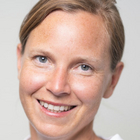EU development policy: ambitious agenda for change or the same old story?
Koch, Svea / Mikaela Gavas / Mark FurnessThe Current Column (2011)
Bonn: German Development Institute / Deutsches Institut für Entwicklungspolitik (DIE) (The current column of 24 October 2011)
Bonn, London 24 October 2011. As the dark clouds of the Euro crisis gather over Brussels this week the mood among Europe’s leaders has seldom been worse. There is, nevertheless, a ray of light shining on one part of the city’s European quarter. Despite its mounting internal problems the EU is striving to face its global responsibilities: The European Commission disburses more than €11 billion in aid every year, and, as the European Development Commissioner, Andris Piebalgs, points out, the fact that the EU is the largest provider of development aid in the world is one of Europe’s success stories. This money has – for example – provided 31 million households with drinking water, vaccinated five million children against measles, and enabled 85,000 female students in developing countries to go to secondary school.
Following almost a year of public consultation, internal negotiation and numerous drafts, on 13 October 2011 the Commission published its latest mission statement on development policy with the grand title ‘Increasing the Impact of EU Development Policy: an Agenda for Change’. But is the new proposal really an Agenda for Change? Is it ambitious enough to equip the Commission to surmount global challenges such as poverty, the food crisis, the economic slump, climate change, and insecurity? Will it really deliver greater impact?
Much of the media reaction so far suggests that the Commission has successfully created this impression. Newspaper headlines such as ‘no more aid for China’ and ‘EU launches controversial new aid reform’ draw attention to three pieces of news: (1) the proposal to focus aid on two areas – good governance and human rights with stricter aid conditionality; and sustainable growth with emphasis on the private sector; (2) the introduction of differentiated development partnerships, implying that more advanced countries will no longer receive aid; and (3) the attempt to boost joint work between the Commission and member state development agencies.
So what’s new?
The Commission’s intent to focus aid on good governance programmes and to make budget support conditional on partners improving their democratic and human rights records is a direct response to the Arab Spring. Aid conditionality has in recent years been expressed as a ‘contract,’ recognising that effectiveness can only be achieved through ‘national ownership’ of programmes even if democracy is lacking. The Agenda refers to ‘stricter conditionality’ which ‘may be warranted in some cases.’ The best performing partners will receive budget support, re-labelled ‘good governance and development contracts’. In countries that ‘loosen their commitment to democracy,’ money will be channelled away from governments to local actors and civil society organisations. Delivering on this noble promise will, however, not be easy. EU officials know from their own experiences in autocratic countries that supporting civil movements is difficult, particularly if they are agitating for political and economic change.
The Commission’s intention to reassess aid to countries that seem wealthy enough to fund their own development could turn out to be highly significant. The EU currently provides aid to 143 countries, many of which have made impressive progress. If aid is to be stopped, two factors need to be considered: First, some countries still have many poor people despite recent rapid growth. More people live in poverty in India, for example, than the entire African continent. The use of average per capita income as a basis for aid allocation decisions fails to recognise that aggregates say little about the capacities of a country to address poverty. Smaller countries like Ghana and Zambia, now classed as ‘middle income,’ still need international assistance. Second, in a globalised world the EU’s overarching poverty reduction goal cannot be separated from how Europe addresses other global public goods challenges such as climate change, communicable diseases and food insecurity. The proposal to cut aid to influential emerging countries presupposes that the Commission has developed a strategy for finding new ways to work with them on addressing global challenges. The Agenda for Change gives little indication of this.
The Agenda revisits the issue of poor coordination between EU development programmes and those of the member states. A ‘single joint programming document’ for partner countries is proposed, together with a ‘single EU contract’ for budget support and a ‘common framework for measuring and communicating results’. Yet, there is no mention of who should coordinate the joint programming exercise. The Commission and the European External Action Service are the logical actors to take the lead, working with partner countries through the EU’s delegations. This model is currently being used to produce the EU’s first joint programming document for the world’s newest country, South Sudan. Even if this is a success, the Commission will still have to convince member states that joint programming can be used in countries where bilateral interests are at stake.
A strategy for development policy beyond aid
The Agenda is above all an ‘aid concept.’ It focuses on the Commission’s efforts to improve as an aid agency. Provisions on policy coherence emphasise ‘doing no harm’ to aid effectiveness, yet the EU policies most harmful to developing countries – agriculture and fisheries – are not actually mentioned.
In any case, aid alone is not enough. In a changing global geopolitical context, complex political, economic and environmental global public goods challenges are having a greater impact on development than aid does. It is a pity, then, that the Agenda is not explicit about the need to develop an EU wide strategy for global development based on mutual interests in underwriting global public goods. Some member states are starting to think in this direction, but at different speeds and with different emphases. More leadership at the EU-level is needed, and yet there is no common strategy for addressing global public goods challenges in the European context. This would require member states to coordinate policy not only at the national level but among the different line ministries as well, many of which have clearly defined national interest agendas.
What’s next?
The Agenda for Change is not, yet, a new policy. It is a proposal from the Commission to the European Council and Parliament. Over the next seven months, member states and the European Parliament will discuss the proposal and decide whether they agree with it before the European Council meeting in May 2012. This debate may lead to a further watering-down of the Agenda, but the Commission should stand firm in the face of those who oppose change, and try to seize the moment to modernise EU development policy.


